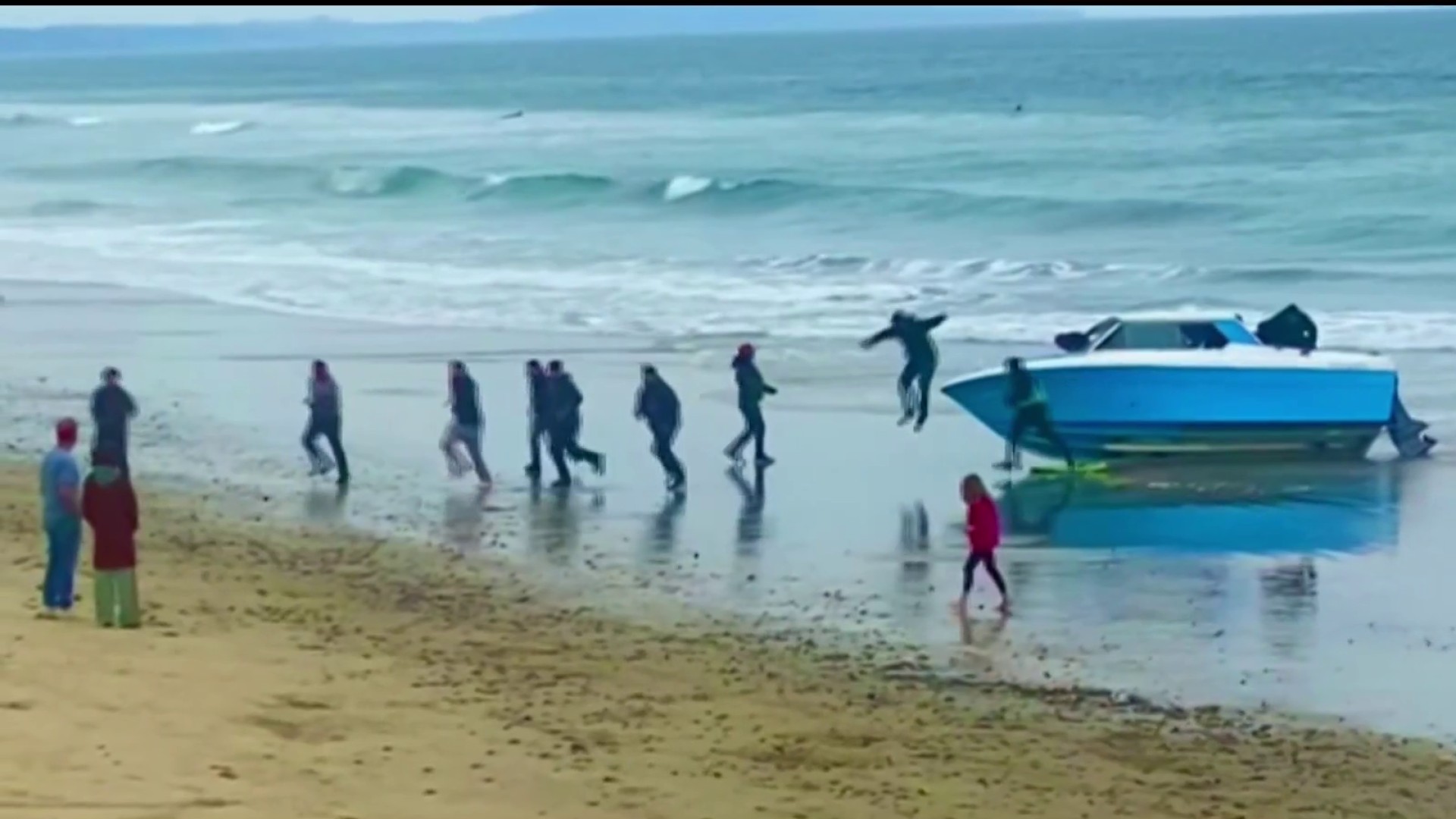San Diego firefighters and lifeguards began using a new guide to help protect communities prone to flooding during the first of potentially many El Nino-fueled storms.
San Diego Fire-Rescue Department (SDFD) firefighters and Lifeguards created the guide in preparation for El Nino.
"The idea is to have a common plan on how to deal with these areas, especially when we know these are the areas that usually do flood," says Lt. John Sandmeyer, a lifeguard with San Diego Fire Rescue. "Rather than restarting from scratch each time. We have a history of being down here (Mission Valley), some of the same areas getting closed, some of the same streets being inundated."
Lifeguards identified 5 areas that have the highest risk of floods and rescues:
- Mission Valley East (of Interstate 805)
- Mission Valley West (of Interstate 805)
- Sorrento Valley
- Chollas Creek
- San Ysidro/Tijuana River Valley
The water rescue guide is a combination of tactical maps, flood gauge readings, and forecast data from the National Weather Service.
It uses templates from the regional wildland pre-fire plan.
Local
Lifeguards say a big part of the plan is initiating staging areas for evacuees and knowing when to bring in additional assets, such heavy equipment.
This week, first responders used the new plan in another high risk area, Sorrento Valley, to evacuate Roselle Street.
"The San Diego Police Department is our partner in the evacuation part of the plan," says San Diego Fire Rescue Battalion Chief Craig Newell. "Using the National Weather Service forecast data, knowing how deep and how high a river is going to go, we can tell how wide it's going to spread and what businesses and residents will be affected by the flooding."
Firefighters say it's very important people heed the safety warnings from emergency responders.
"If people don't evacuate, it exposes them to complications of contaminated flood waters. Also, if we have to go back and rescue someone, it's a drain on necessary resources," says Newell.
Chollas Creek is considered another high risk area because it's a flood control channel that runs through Southeast San Diego.
"One of the concerns we have with Chollas Creek is the flood channels were designed to move as much water as possible to prevent the flooding. But in doing so, the slick walls of the channel are a hazard to anyone who falls into a flood control channel and a hazard to the firefighters or lifeguards who rescue them," says Newell. "It's very difficult to rescue anyone because there is never a stop or a break in the water flow."
The new water rescue plan identifies 41 places along Chollas Creek where it's safe to rescue someone.
Under California's mutual aid agreement, all first responders can be called out to help in other areas.
The plan makes it much easier for first responders in other agencies to jump in and help.
First responders can access the plan through their electronic devices, so they can prepare, even as they head to an emergency.
"They see the hazards that are present. They know the conditions of the flooding. They know the access points. They know the points for the staging areas. They know the command post locations," says Newell. "Information to us is power. People in the field have to make critical decisions so they can use that information to make good tactical decisions because so many variations and so many variables come with a river rescue event... if the person is trapped in moving water, if they're trapped in stillwater, if they're trapped in a flood control channel. We can't predict all of those events, but we can give them a good format to give them an understanding of the resources available to them."
Another important element of the new guide is getting the word out to the public through mainstream media and social media, and also making sure there's a common message on safety alerts, such as what areas to avoid.
"We're trying to get to the point of being organized, and well coordinated. At this point, we can start at square 6 instead of square 1 and have everybody on the same page," says Lt. Sandmeyer.
"We're open to sharing this template with any other fire agency that wants to use it for their plan. We want to make sure that anyone who wants to, can use it for their department as well," says Newell.
First responders also want to everyone to know where to find the resources they need in an emergency.
For more information about El Nino and what resources are available to you, go to the City of San Diego's website by clicking here.



